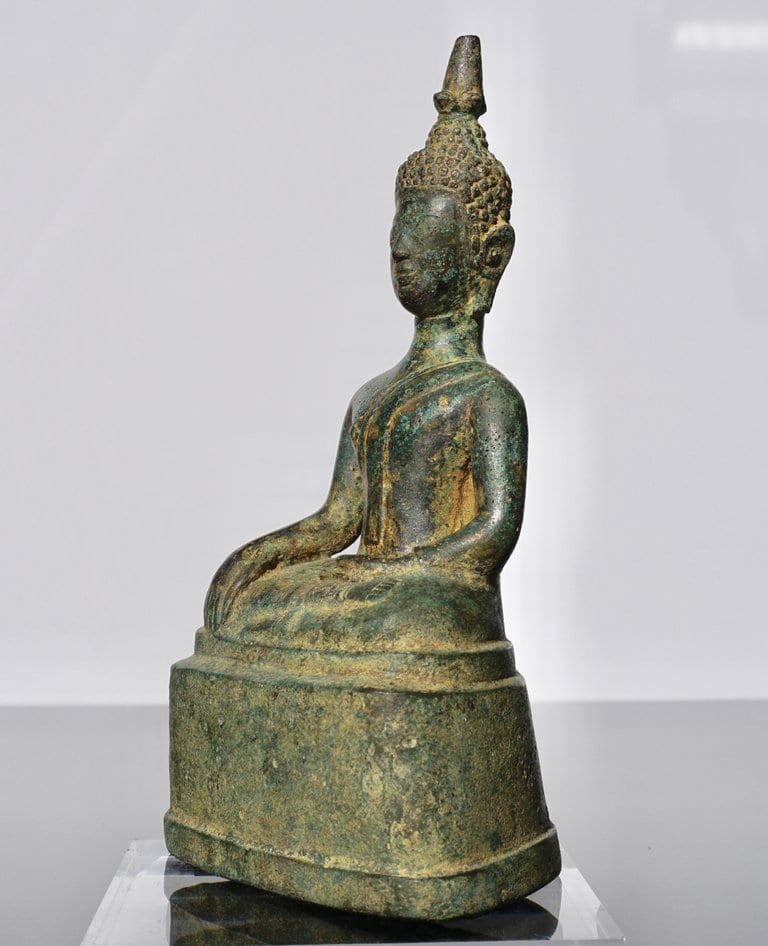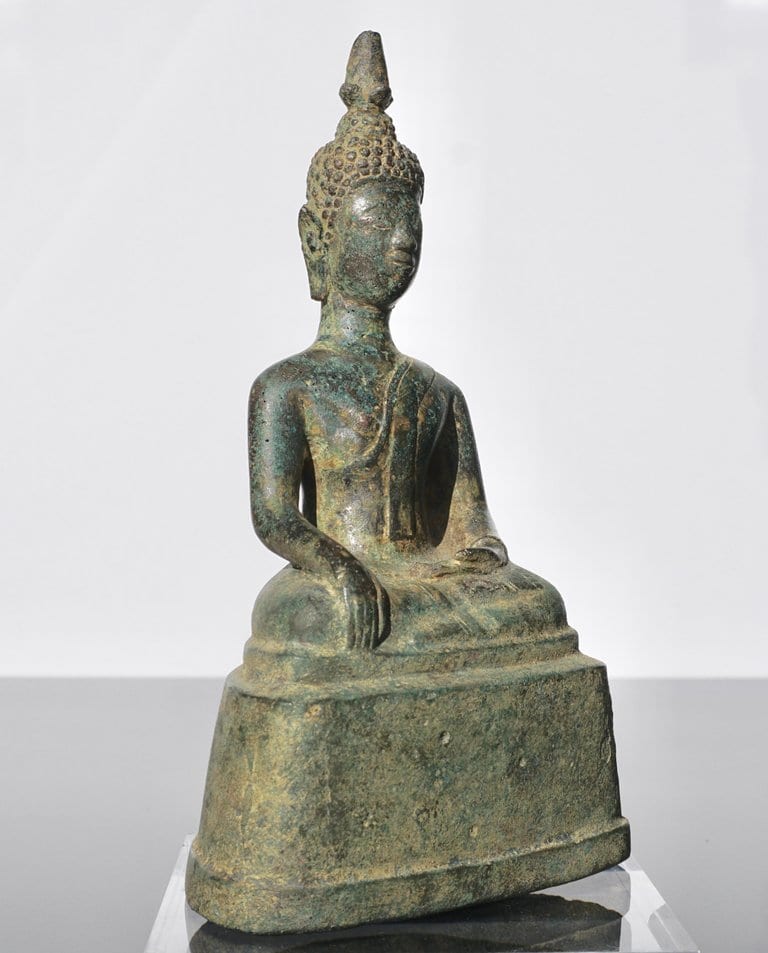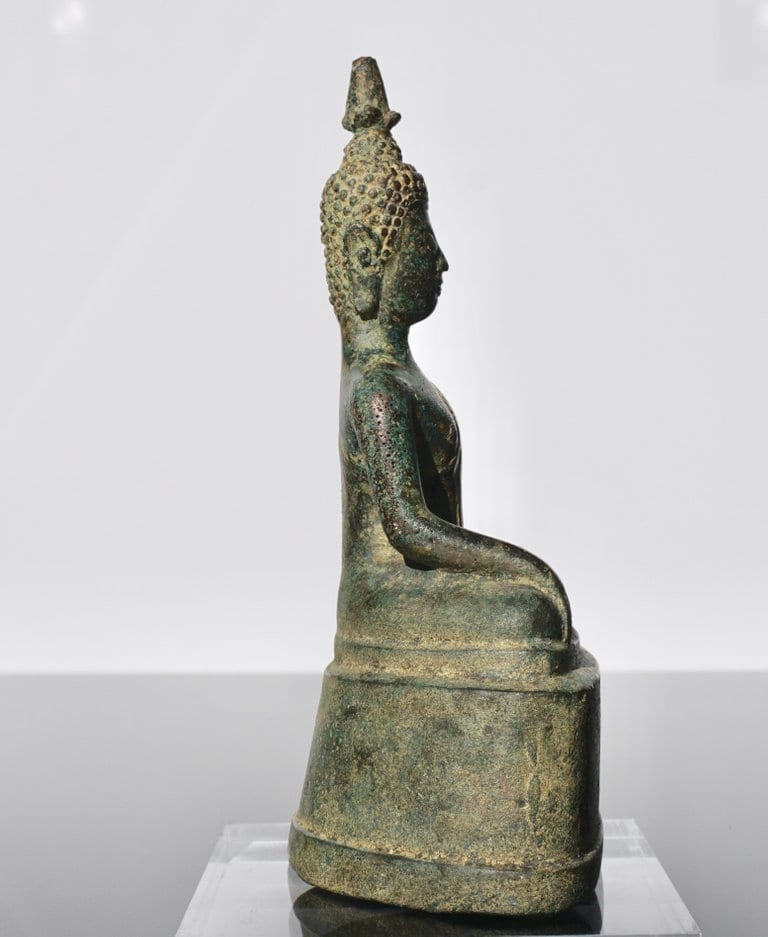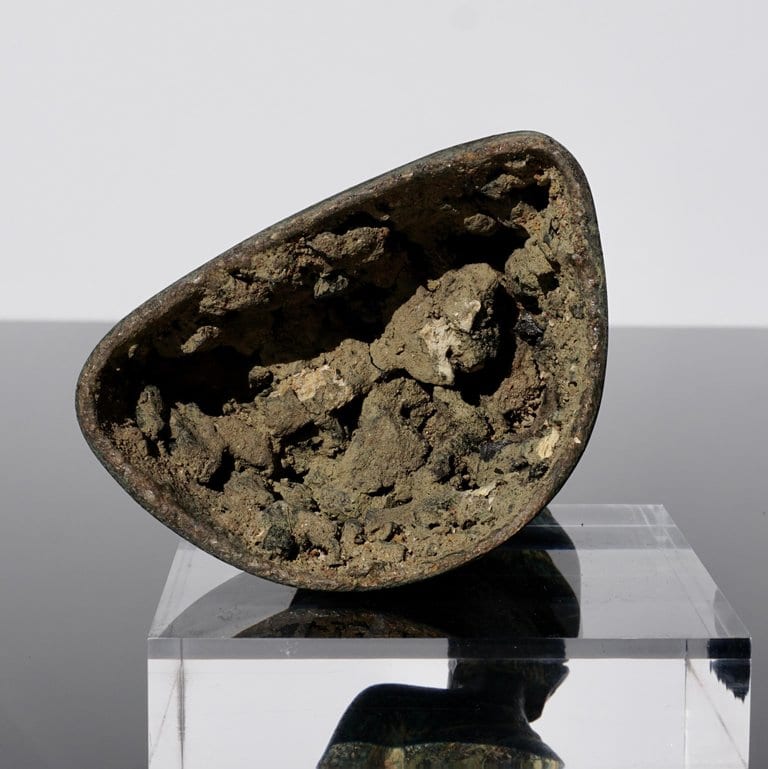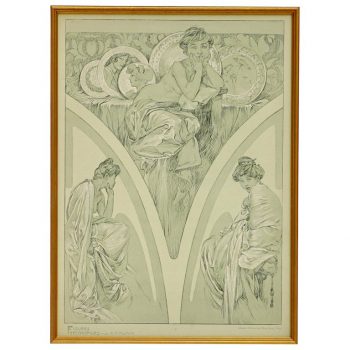Description
A bronze seated figure of Buddha Statue Thailand, Ayutthaya period, 15th-16th century (early Ming dynasty period)
This Buddha is seated on a pedestal in the cross-legged yogic posture of satvaparyankasana, the right leg placed over the left. His right hand is lowered, long fingers pointing downward in the earth-touching gesture, or bhumisparshamudra.
There is some age wear; otherwise good condition commensurate of age and use.
Measures: Height 7 inches (18 cm) width 4 inches (10.2 cm)
The establishment of the new kingdom of Ayutthaya in the middle of the 14th century and the change of the political center of Thai power from Sukhothai to Ayutthaya marked the beginning of a New Era of great cultural prosperity. From the capital city of Ayutthaya located at the confluence of three rivers (the Chao Phraya, the Pasak, and the Lopburi) the kingdom of Ayutthaya dominated Menam Basin for over four centuries. However, it is clear that this strategic geographical and economical site had been settled by an ancient Community, long before King Ramathihodi I traditionally founded the city. Ramathihodi I was a renowned warrior and lawmaker. Under his leadership, and under his immediate successors, the kingdom rapidly expanded north towards Sukhothai and east towards the Khmer capital of Angkor Wat, which they managed to seize for a brief interval. Under royal patronage, Buddhism flourished and Ayutthaya became an important Buddhist center. The rulers of this dynasty, like the rulers of the Sukhothai Kingdom, patronized cultural and religious intercourse between Sri Lanka and Thailand and encouraged and supported the development and propagation of Sihala Buddhism in Thailand. Centuries of battles with the Burmese would eventually culminate in the sacking and burning of Ayutthaya in 1767, thus ending one of the most prosperous and culturally influential periods in Thai history.



